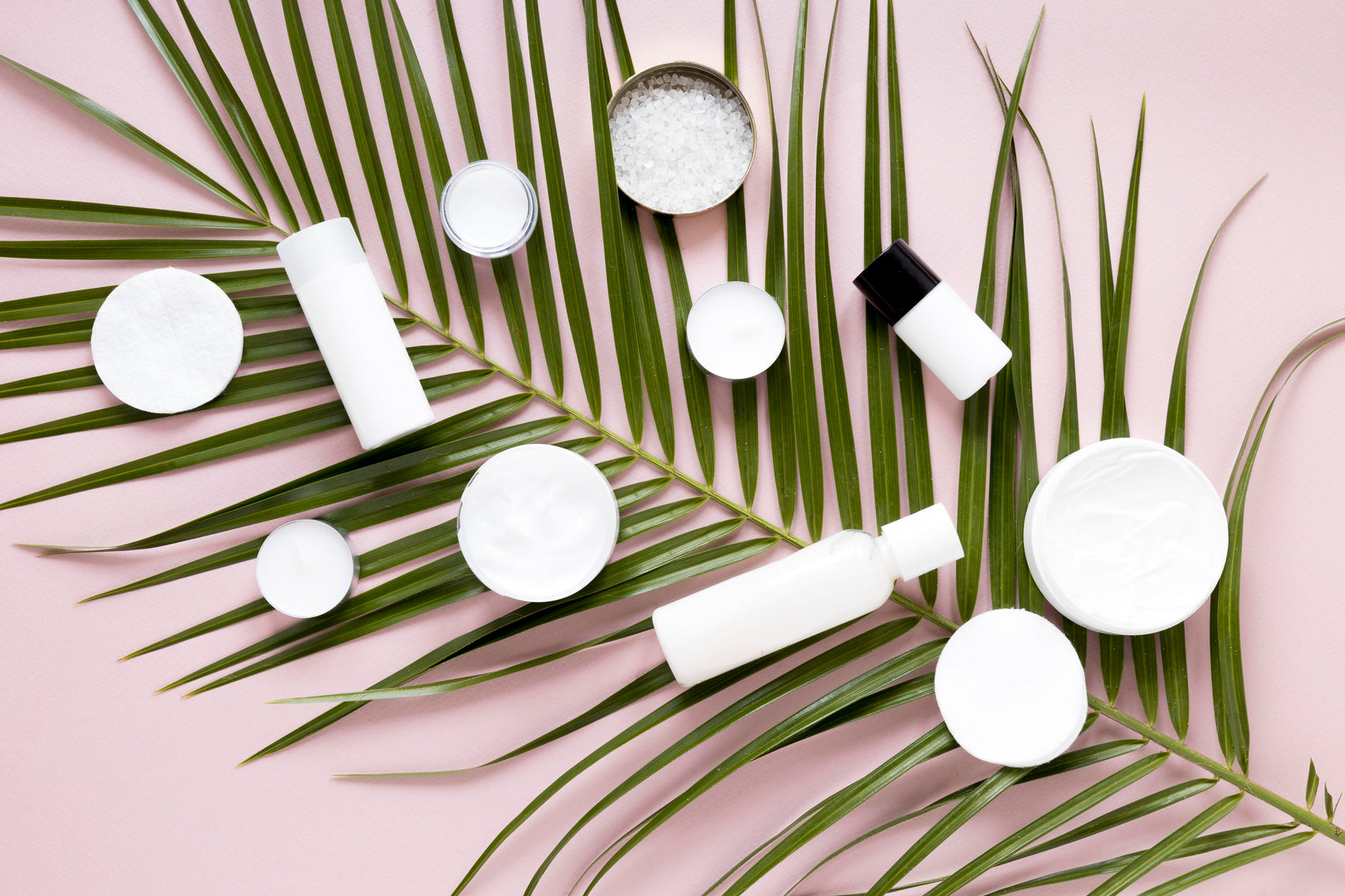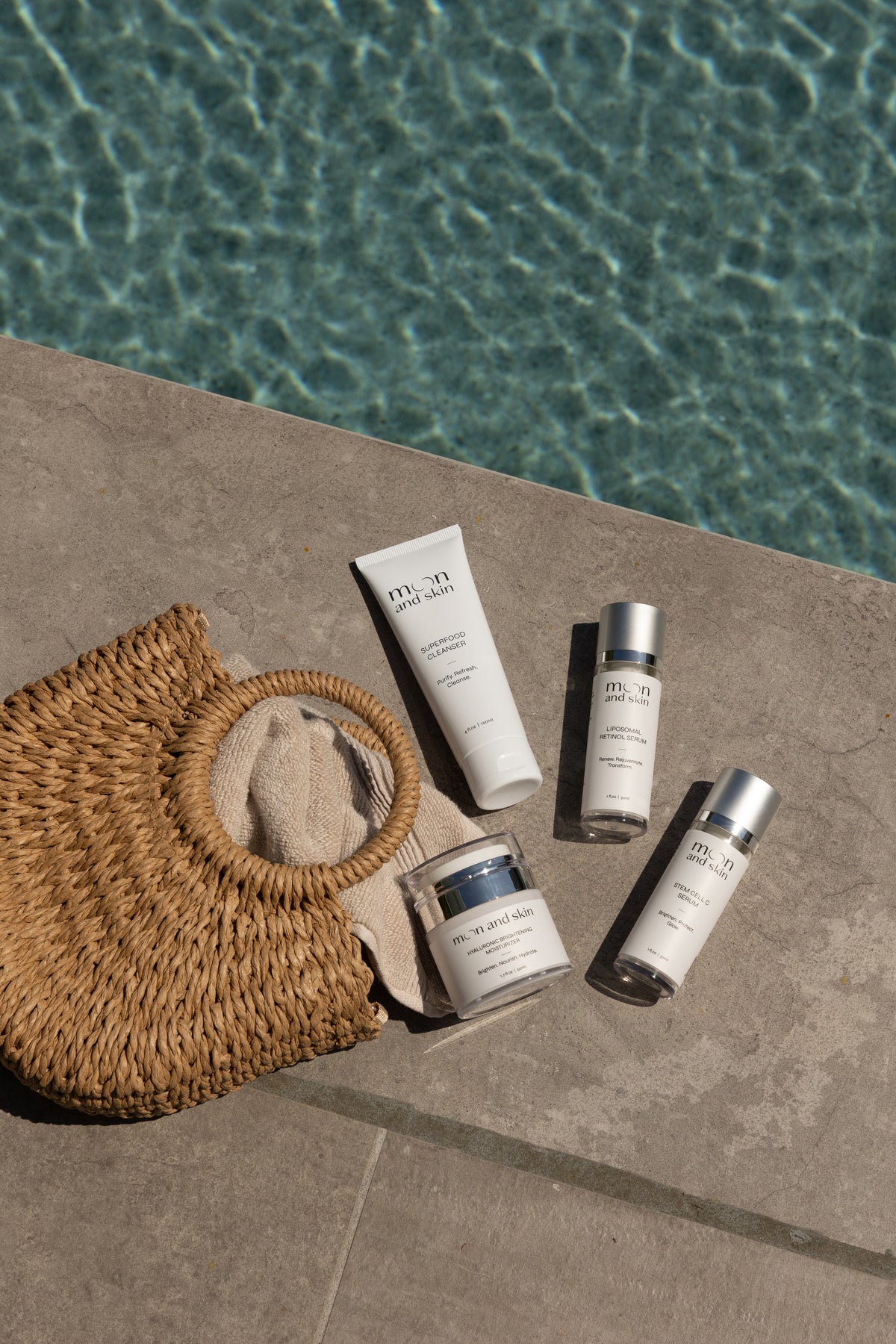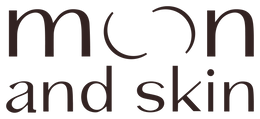Table of Contents
Introduction
Have you ever noticed a flurry of tiny flakes or dry patches on your skin after starting a new skincare product? If so, you're not alone. Many people experience a similar phenomenon when they introduce retinol into their skincare routines. This popular ingredient, known for its impressive anti-aging benefits, often comes with a downside: skin peeling. But does retinol necessarily make skin peel? In this comprehensive guide, we will explore the reasons behind this common side effect, how to navigate the retinol journey, and effective strategies to incorporate retinol into your routine while minimizing irritation.
At Moon and Skin, we believe in providing clean, thoughtful skincare for every phase of life. Our mission emphasizes harmony with nature and education to empower our community. As we delve into the world of retinol, we aim to support you in celebrating your skin's journey, ensuring you have the knowledge and tools to achieve a radiant complexion.
Throughout this article, you will learn about the science of retinol, why it can cause peeling, how to use it safely, and what to expect during the adjustment period. We’ll also highlight our products that can complement your retinol use and help you maintain skin health. So, if you're curious about the connection between retinol and skin peeling, join us as we unravel this skincare mystery together.
What is Retinol?
Retinol is a derivative of vitamin A and is celebrated in the skincare community for its ability to boost cell turnover, improve skin texture, and reduce the appearance of fine lines and wrinkles. As we age, our skin's natural cell renewal process slows down, leading to dullness and uneven texture. Retinol works by stimulating the production of new skin cells and encouraging the shedding of old, dead skin. This process helps to reveal a brighter, smoother complexion.
Retinol is available in various strengths and formulations, ranging from gentle over-the-counter options to more potent prescription retinoids. It’s important to understand that while retinol can be incredibly beneficial for the skin, it can also come with side effects, particularly for those who are new to its use.
Why Does Retinol Cause Peeling?
The primary reason retinol can make skin peel is due to its mechanism of action. Retinol accelerates the skin cell turnover process by promoting the shedding of the outermost layer of skin. When you first start using retinol, your skin may not be accustomed to this increased rate of exfoliation, leading to mild to moderate peeling as your skin adjusts—a process commonly referred to as "retinization."
The Retinization Process
During the retinization phase, which can last anywhere from two weeks to a few months, your skin undergoes several changes:
-
Increased Cell Turnover: As retinol encourages new cell growth, old skin cells are exfoliated more rapidly. This can result in flaking and peeling as the skin adjusts to the new cycle.
-
Sensitivity: Many users experience increased sensitivity, redness, and dryness. This is particularly common for those with sensitive skin types, who may find that their skin reacts more intensely to the ingredient.
-
Adjustment Period: The duration and severity of peeling can vary widely among individuals, depending on factors such as skin type, the concentration of retinol used, and frequency of application.
While peeling is a normal reaction, it can be disheartening, especially when one is aiming for a smoother, clearer complexion. However, it's essential to recognize that this is often a sign that the retinol is working and that your skin is undergoing a transformation.
Factors Influencing Retinol Peeling
Several factors can influence the intensity of peeling experienced when using retinol:
1. Concentration of Retinol
The strength of the retinol product plays a significant role in how your skin reacts. Higher concentrations may lead to more pronounced peeling, while lower concentrations are gentler and may allow for a more gradual adjustment. We recommend starting with our Eclipse™ Retinol Serum, which offers a balanced approach to introducing retinol into your routine without overwhelming your skin.
2. Frequency of Application
How often you apply retinol can also affect the level of irritation you experience. New users are advised to start with applications two to three times a week, gradually increasing frequency as their skin builds tolerance. Overuse, especially in the initial stages, can exacerbate peeling and discomfort.
3. Skin Type and Sensitivity
Individuals with sensitive skin or conditions such as eczema or rosacea may experience more intense reactions to retinol. It's essential to consider your skin type when selecting a product and to consult with a dermatologist if you have concerns.
4. Combination with Other Active Ingredients
Using retinol in conjunction with other active ingredients, such as alpha hydroxy acids (AHAs) or benzoyl peroxide, can increase the likelihood of irritation and peeling. Therefore, it's best to introduce these products gradually and avoid layering them on the same day until your skin is accustomed to retinol.
How to Use Retinol Safely
To maximize the benefits of retinol while minimizing the risk of peeling and irritation, consider the following tips:
1. Start Slow
Begin your retinol journey with a lower concentration, such as 0.25% to 0.5%, and apply it only two to three times a week. This gentle introduction allows your skin to acclimate to the ingredient.
2. Use a Moisturizer
Incorporating a nourishing moisturizer, like our Celestial™ Moisturizer, can help mitigate dryness and peeling. Applying a rich, fragrance-free moisturizer before and after retinol can also provide a buffer against irritation.
3. Consider the "Retinol Sandwich" Method
This technique involves applying a layer of moisturizer first, then retinol, followed by another layer of moisturizer. This approach helps hydrate the skin while allowing you to reap the benefits of retinol without excessive irritation.
4. Avoid Other Irritating Products
During the initial adjustment period, avoid using other potentially irritating products, such as physical exfoliants, toners with alcohol, or other active ingredients. Keeping your skincare routine simple will help your skin adapt more comfortably.
5. Be Patient
Remember that the retinization process takes time. While peeling can be disconcerting, it’s often temporary and will subside as your skin builds tolerance. Consistency is key—stick with your routine, and be patient as your skin adjusts.
6. Use Sunscreen Daily
Retinol can make your skin more sensitive to sunlight, so it's crucial to apply a broad-spectrum sunscreen with an SPF of 30 or higher every morning. Protecting your skin from UV damage is vital for maintaining its health and preventing further irritation.
Managing Retinol-Induced Peeling
If you find yourself struggling with excessive peeling, here are a few strategies to help manage the situation:
1. Hydrate and Moisturize
Keep your skin hydrated by drinking plenty of water and using a rich moisturizer. Ingredients like hyaluronic acid, which is known for its ability to retain moisture, can be particularly beneficial.
2. Take Breaks if Necessary
If peeling becomes severe, consider taking a break from retinol for a few days. Allowing your skin to recover can help alleviate discomfort and prevent further irritation.
3. Gentle Exfoliation
While it may seem counterintuitive, gentle exfoliation can help remove dead skin cells and reduce the appearance of peeling. However, avoid aggressive scrubs or harsh exfoliants; instead, opt for mild chemical exfoliants that won't further irritate your skin.
4. Consult a Dermatologist
If you're unsure how to proceed or if peeling persists beyond the adjustment period, it’s wise to consult a dermatologist. They can provide personalized recommendations based on your skin type and concerns.
Alternative Ingredients to Consider
For those who may not tolerate retinol well or are looking for alternatives, there are several options that can provide similar benefits without the associated peeling:
1. Bakuchiol
A plant-based alternative to retinol, bakuchiol has been shown to have anti-aging properties without the irritation that retinol can cause. It's a great option for those with sensitive skin.
2. Peptides
Peptides help stimulate collagen production and improve skin texture, making them an excellent choice for combating signs of aging.
3. Vitamin C
Known for its brightening properties, vitamin C can help improve skin tone and texture while providing antioxidant protection.
Conclusion
In conclusion, while retinol can indeed make skin peel, this response is a common part of the adjustment process as your skin becomes accustomed to the ingredient. By understanding the underlying mechanisms and implementing effective strategies, you can enjoy the vast benefits of retinol while minimizing discomfort.
At Moon and Skin, we are committed to supporting your skincare journey, providing clean and thoughtful products tailored for every phase of life. Whether you choose to incorporate retinol or explore alternative ingredients, our goal is to empower you with the knowledge needed to achieve radiant, healthy skin.
If you're ready to embark on your retinol journey or seek additional support, we invite you to explore our collection of products, including the Eclipse™ Retinol Serum, designed to deliver gentle yet effective results. And don't forget to join our Glow List for exclusive offers and expert skincare tips delivered directly to your inbox!
FAQ
1. Can I use retinol if I have sensitive skin? Yes, but it's crucial to start with a lower concentration and introduce it gradually. Use a gentle moisturizer to help buffer against irritation.
2. How long does retinol peeling last? Peeling typically lasts from a few weeks to a couple of months, depending on individual skin sensitivity and the frequency of use. Consistency is key.
3. Can I use retinol during the day? While some formulations allow for daytime use, it's generally recommended to apply retinol at night and always follow up with sunscreen during the day.
4. What should I do if I experience excessive peeling? If peeling becomes severe, take a break from retinol for a few days and focus on hydration. If it persists, consult a dermatologist.
5. Are there alternatives to retinol that don’t cause peeling? Yes, options such as bakuchiol, peptides, and vitamin C can provide anti-aging benefits without the irritation associated with retinol.
Explore our complete collection of clean, thoughtful skincare here and discover how our products can transform your routine today!







